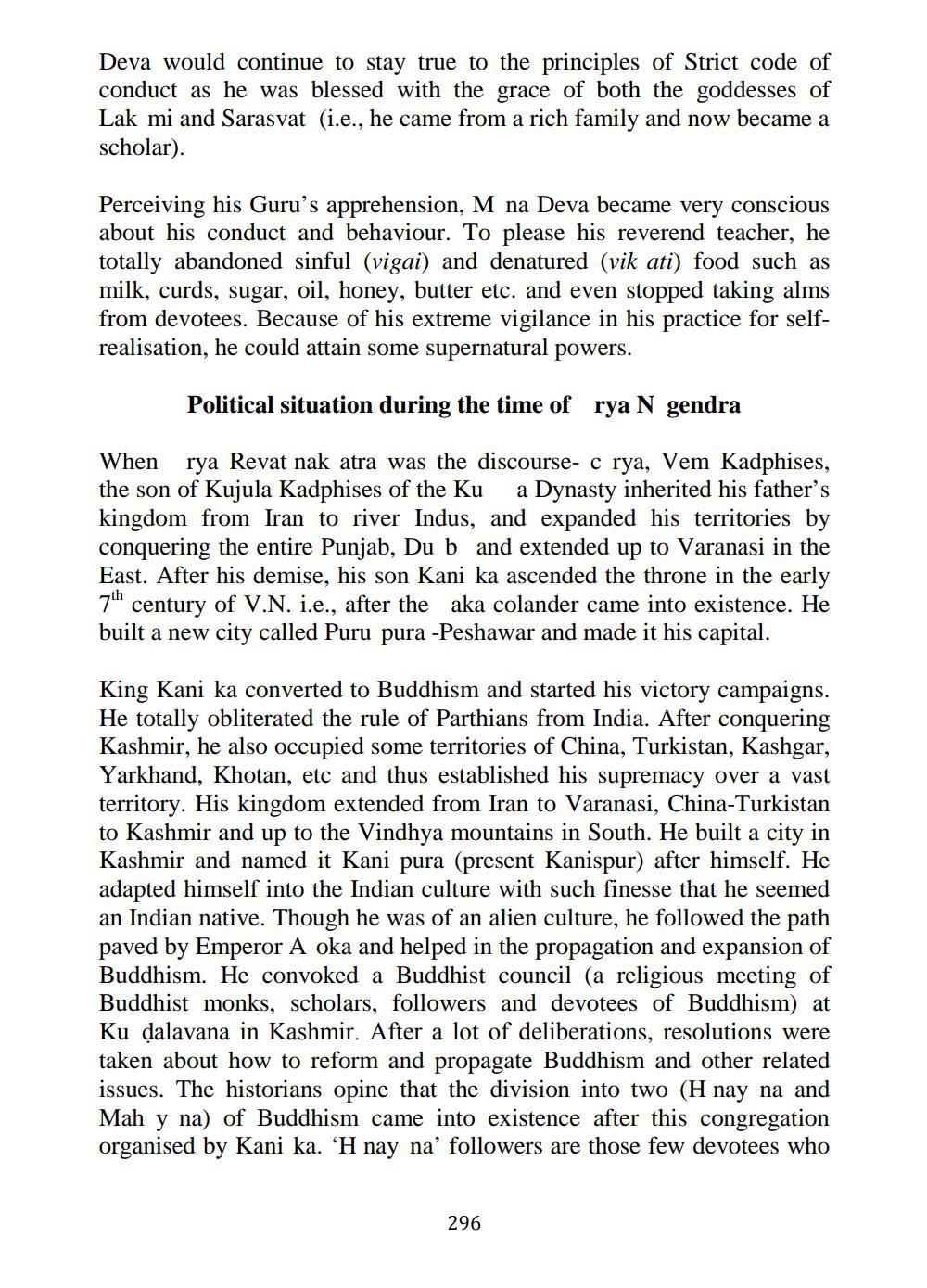________________
Deva would continue to stay true to the principles of Strict code of conduct as he was blessed with the grace of both the goddesses of Lak mi and Sarasvat (i.e., he came from a rich family and now became a scholar).
Perceiving his Guru's apprehension, M na Deva became very conscious about his conduct and behaviour. To please his reverend teacher, he totally abandoned sinful (vigai) and denatured (vik ati) food such as milk, curds, sugar, oil, honey, butter etc. and even stopped taking alms from devotees. Because of his extreme vigilance in his practice for selfrealisation, he could attain some supernatural powers.
Political situation during the time of rya N gendra
When rya Revat nak atra was the discourse- c rya, Vem Kadphises, the son of Kujula Kadphises of the Ku a Dynasty inherited his father's kingdom from Iran to river Indus, and expanded his territories by conquering the entire Punjab, Du b and extended up to Varanasi in the East. After his demise, his son Kani ka ascended the throne in the early 7th century of V.N. i.e., after the aka colander came into existence. He built a new city called Puru pura - Peshawar and made it his capital.
King Kani ka converted to Buddhism and started his victory campaigns. He totally obliterated the rule of Parthians from India. After conquering Kashmir, he also occupied some territories of China, Turkistan, Kashgar, Yarkhand, Khotan, etc and thus established his supremacy over a vast territory. His kingdom extended from Iran to Varanasi, China-Turkistan to Kashmir and up to the Vindhya mountains in South. He built a city in Kashmir and named it Kani pura (present Kanispur) after himself. He adapted himself into the Indian culture with such finesse that he seemed an Indian native. Though he was of an alien culture, he followed the path paved by Emperor A oka and helped in the propagation and expansion of Buddhism. He convoked a Buddhist council (a religious meeting of Buddhist monks, scholars, followers and devotees of Buddhism) at Ku dalavana in Kashmir. After a lot of deliberations, resolutions were taken about how to reform and propagate Buddhism and other related issues. The historians opine that the division into two (H nay na and Mah y na) of Buddhism came into existence after this congregation organised by Kani ka. 'H nay na' followers are those few devotees who
296




